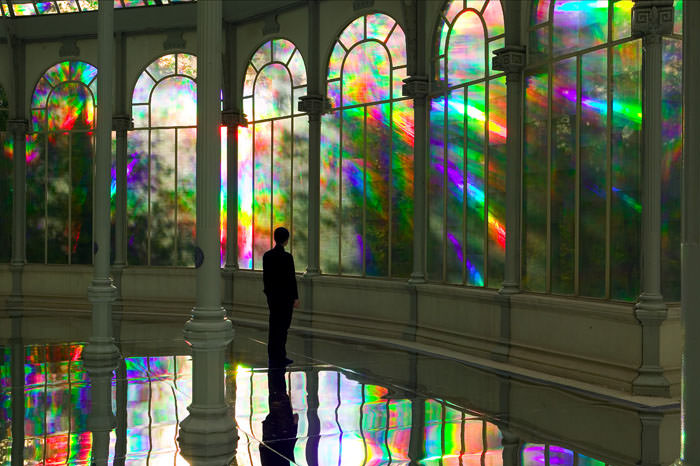Palacio de Cristal, Madrid, Spain. The incredible glass structure was built in 1887 to exhibit exotic flora and fauna. However, in 2006 Korean artist Kimsooja turned this whole Crystal Palace into an art installation, which made the visitors feel like entering a fairy tale.
Kimsooja put mirrors on the floor and covered windows with a translucent filters that caused light diffraction, thus filling the rooms with the surreal rainbows. The artist’s breathing from another performance could be heard, which filled, according to Kimsooja, the empty space with ethereal elements.
Why to go there?
The palace is used for the art installations today. Although Kimsooja’s beautiful installation is no longer available, always check for the new performances.
When to go there?
Always check for the new exhibitions before going.
How to get there?
It is found in Retiro Park, near Del Prado Museum.
Read more: Kimsooja, Go Mardird

Photo by Unknown
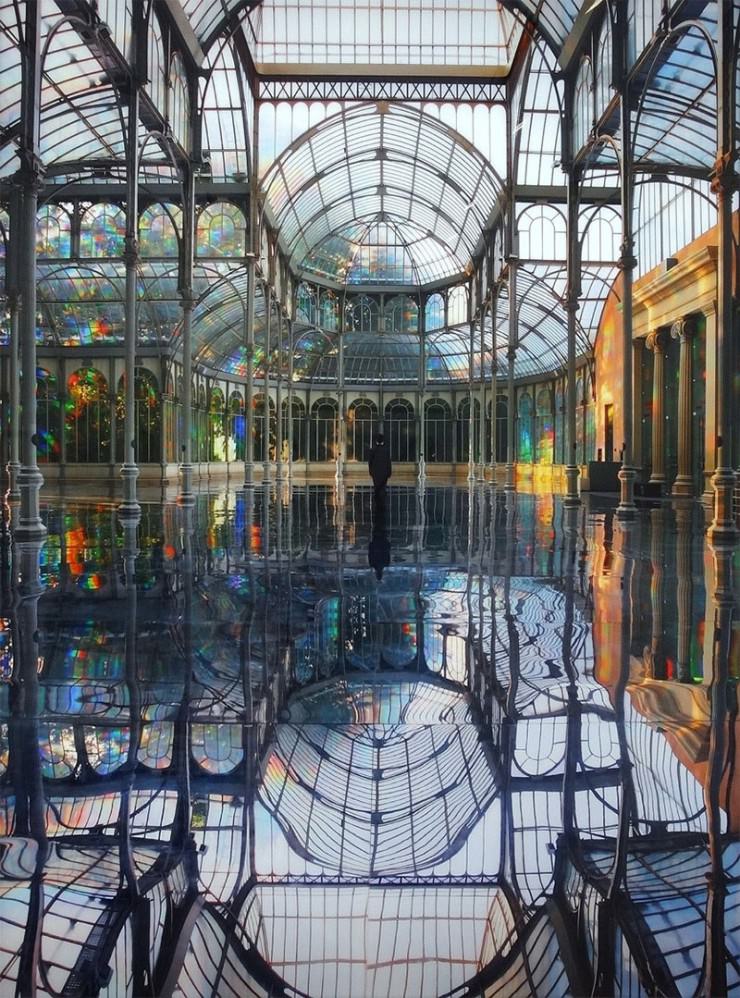
Photo by Unknown
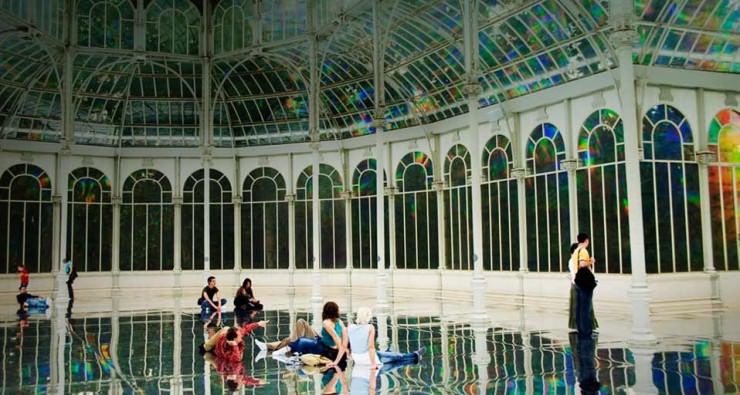
Photo by Unknown
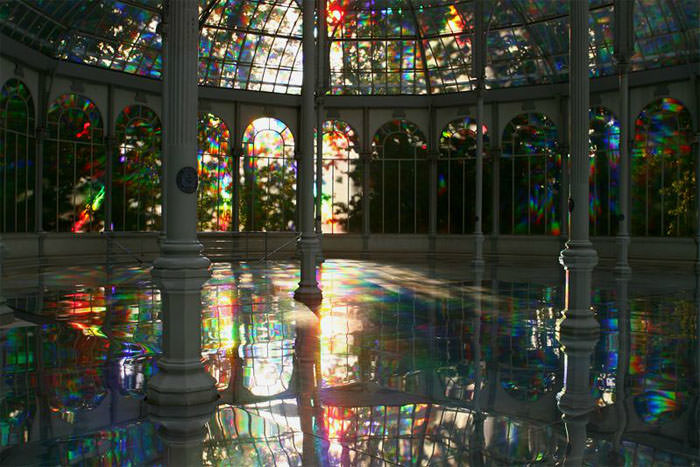
Photo by Unknown
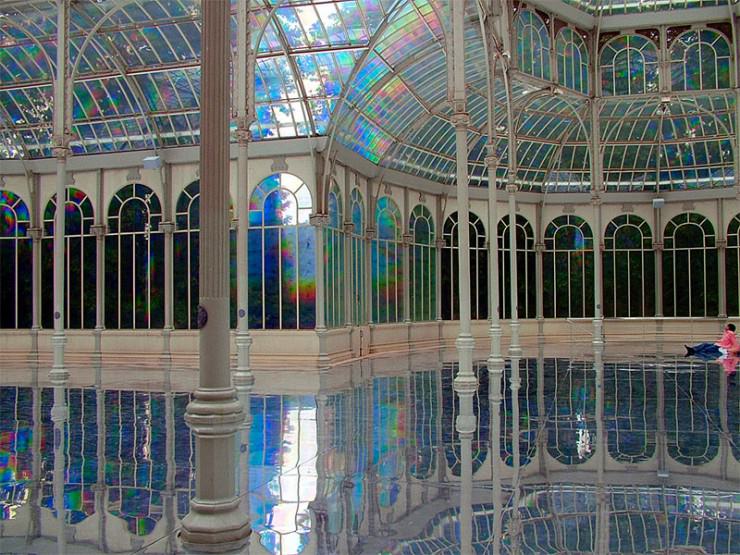
Photo by Unknown
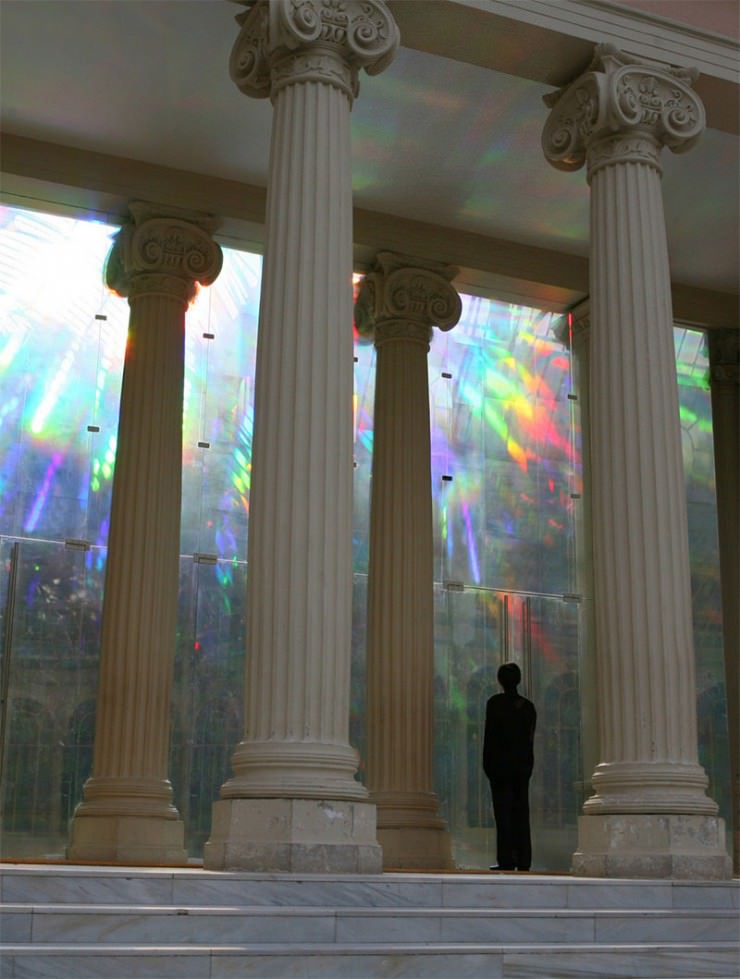
Photo by Unknown
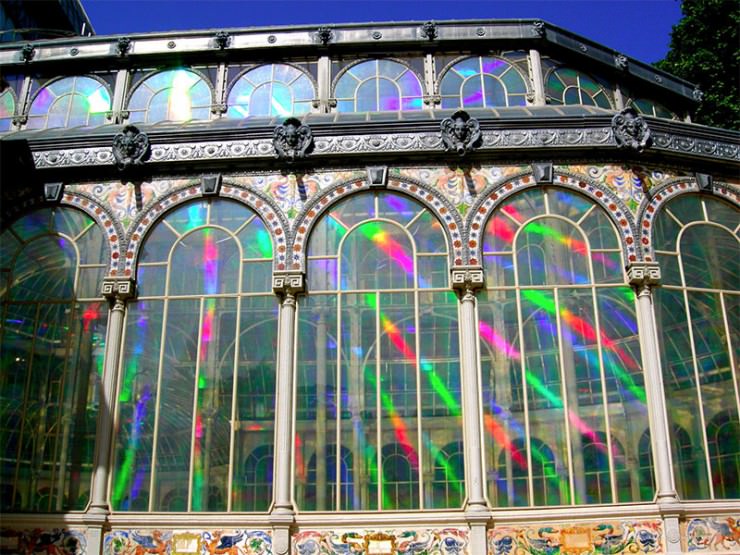
Photo by Unknown
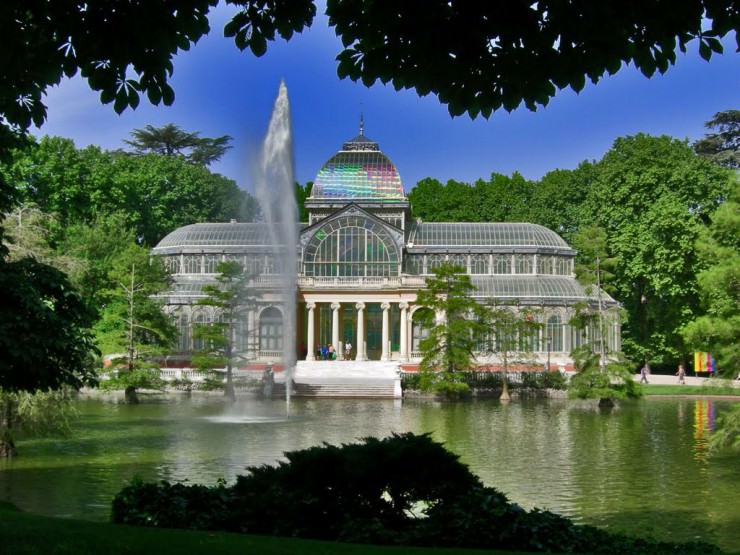
Photo by Unknown
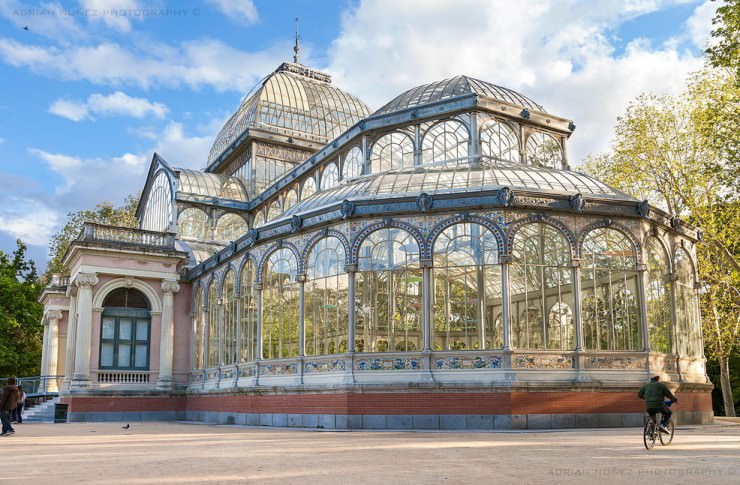
Photo by Adrian Nuñez
[symple_googlemap title=”Palacio de Cristal, Madrid, Ispanija” location=”Palacio de Cristal, Madrid, Ispanija” zoom=”10″ height=250]
